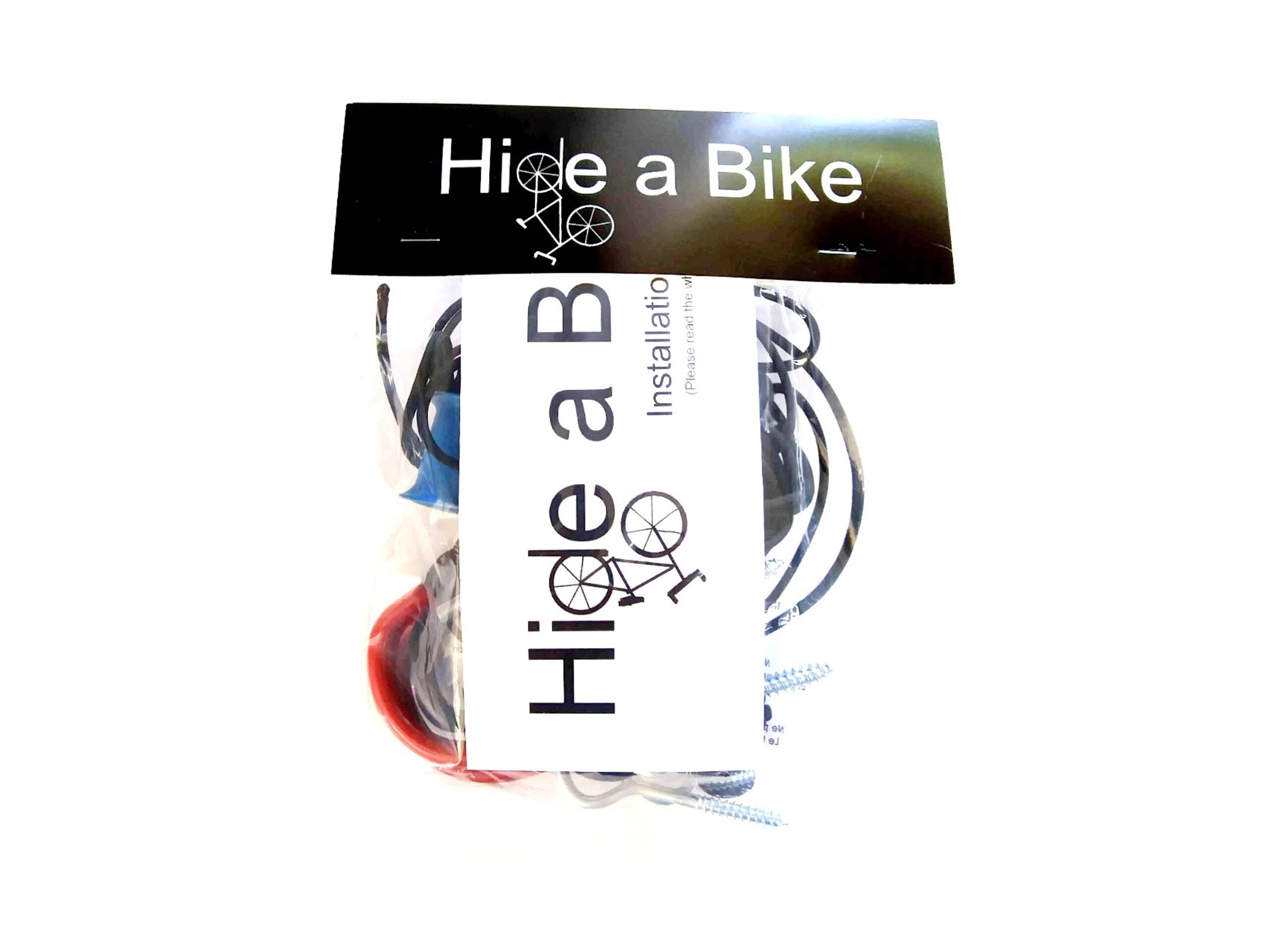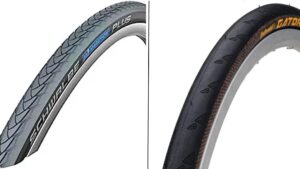How Wheel Shape Impacts Cycling Speed And Aerodynamics

Explore the impact of wheel shape on cycling speed and aerodynamics. Discover strategies and real-world examples for optimal performance.
*This article may contain affiliate ads that help to support this site*
Aerodynamics, the study of how air interacts with objects in motion, plays a pivotal role in determining a cyclist’s speed and efficiency. Among the various components influencing aerodynamics, the shape of the wheels emerges as a critical factor. In this exploration, we unravel the intricate relationship between wheel design and cycling performance. From the fundamentals of aerodynamics to the nuanced impact of wheel shape on speed, this article delves into the science that propels cyclists forward. Join us on this journey as we decipher how the right wheel can be the key to slicing through the wind and gaining a competitive edge.
The Basics Of Aerodynamics In Cycling
Cycling’s speed is intricately linked to its ability to cut through the resistance of the air it moves through. Aerodynamics, in the context of cycling, refers to the study of how air interacts with the cyclist and their equipment. When a cyclist moves forward, they encounter air resistance, commonly known as drag, which can significantly impede their progress. Minimizing this resistance becomes crucial for optimal performance.
In simple terms, aerodynamics in cycling involves streamlining the cyclist and their gear to reduce drag. The faster a cyclist moves, the greater the force of air resistance. Understanding and optimizing the factors that contribute to drag, such as body position and equipment design, can lead to a substantial improvement in overall speed and efficiency. As cyclists strive for increased performance, the importance of aerodynamics becomes increasingly apparent. The upcoming sections will delve deeper into one specific aspect of aerodynamics—the impact of wheel shape—and how it plays a pivotal role in shaping the cycling experience.
Understanding Different Wheel Shapes
Wheels, often regarded as a bicycle’s unsung heroes, come in a variety of shapes and sizes, each influencing aerodynamics in distinct ways. Traditional wheel shapes typically feature a standard rim depth and width, offering a balance of stability and aerodynamic efficiency. However, recent advancements in cycling technology have introduced a plethora of options, including deep-dish wheels with increased rim depth and unique profiles.
The depth, width, and overall profile of a wheel can significantly impact its aerodynamic performance. Deep-dish wheels, characterized by their deeper rims, are designed to minimize drag by smoothing the airflow over the wheel and reducing turbulence. These wheels are particularly favored in time trials and triathlons, where maintaining a high and consistent speed is paramount.
Conversely, standard wheels, with shallower rims, excel in scenarios where stability and maneuverability take precedence over pure aerodynamics. Cyclists navigating varied terrain, such as climbs and descents, may find standard wheels more suitable for their needs.
Choosing the right wheel shape involves a delicate balance between aerodynamic advantage and practical considerations. Riders must weigh factors like the type of terrain they’ll encounter, personal cycling style, and the specific demands of their chosen discipline. As we delve deeper into the realm of wheel aerodynamics, we’ll explore how these design nuances translate into real-world performance gains and losses, providing cyclists with valuable insights into optimizing their equipment for maximum efficiency.
Deep Dish Vs. Standard Wheels
In the quest for optimal aerodynamics, the choice between deep-dish and standard wheels becomes a critical decision for cyclists. Deep-dish wheels, characterized by their pronounced rim depth, are engineered to slice through the air with reduced drag. This design is particularly advantageous in time trial events and flat terrain, where maintaining high speeds is paramount.
The deeper rims of these wheels create a more streamlined profile, effectively minimizing turbulent air and enhancing overall aerodynamic efficiency. However, this advantage comes with trade-offs. Deep-dish wheels can be more challenging to handle in crosswinds, potentially affecting a cyclist’s stability and control.
On the other hand, standard wheels, with their shallower rim depth, prioritize stability and versatility. Cyclists traversing varied landscapes, including climbs and descents, may prefer standard wheels for their ability to handle different conditions with greater ease. The reduced susceptibility to crosswinds provides an added advantage, making standard wheels a reliable choice for a broader range of cycling scenarios.
The decision between deep-dish and standard wheels often boils down to the specific demands of the race or ride. Professional cyclists carefully assess the course profile, weather conditions, and their individual strengths and preferences when selecting wheel types. As we explore deeper into the nuances of wheel aerodynamics, it becomes evident that the perfect wheel choice is a blend of personal comfort, strategic advantage, and an understanding of the environmental factors at play. In the subsequent sections, we’ll unravel the impact of these choices in real-world cycling scenarios.

Hide A Bike Kit
Is your garage starting to become a mess? Save space by storing your bikes flat against the ceiling.
The Role Of Crosswinds
As cyclists navigate various terrains, the influence of crosswinds on aerodynamics becomes a crucial consideration, particularly in the context of wheel shape. Crosswinds, the lateral winds blowing across a cyclist’s path, can significantly impact stability and control.
The interaction between crosswinds and wheel shape is a delicate dance. Deep-dish wheels, while excelling in minimizing drag in calm conditions, can pose challenges when faced with crosswinds. The increased surface area and pronounced profile may make the bicycle more susceptible to being pushed off course, demanding a higher level of skill and attention from the cyclist.
In contrast, standard wheels, with their shallower rim depth, present a smaller surface area for crosswinds to act upon. This characteristic enhances stability, making them a more predictable choice when wind conditions are less favorable.
Navigating crosswinds effectively requires cyclists to strike a balance between the aerodynamic advantages of their chosen wheel shape and the potential challenges posed by the wind. Techniques such as adjusting body positioning and maintaining a steady grip on the handlebars become pivotal skills in handling crosswind scenarios.
Understanding the interplay between wheel shape and crosswinds empowers cyclists to make informed decisions based on the specific conditions they anticipate encountering. The upcoming sections will delve into real-world examples and case studies, shedding light on how professional cyclists strategically adapt their wheel choices to varying conditions, ultimately maximizing their performance and maintaining control in the face of unpredictable crosswinds.
Case Studies And Real World Examples
To truly grasp the impact of wheel shape on cycling performance, let’s turn our attention to notable case studies and real-world examples where professional cyclists strategically leveraged their understanding of aerodynamics.
1) Tour de France Contenders: In the mountainous stages of the Tour de France, where climbs and descents play a crucial role, many top contenders opt for standard wheels. The reduced weight and increased stability prove advantageous in navigating the challenging and varied terrain.
2) Time Trial Specialists: Time trial specialists, aiming for maximum speed on flat and straight courses, often favor deep-dish wheels. The aerodynamic gains help them cut through the air more efficiently, gaining valuable seconds in races against the clock.
3) Crosswind Strategies: During races with unpredictable crosswinds, cyclists may choose their wheels strategically. Some opt for a compromise, using wheels with a moderate rim depth to balance aerodynamics and stability.
4) Technological Innovations: Cycling technology continually evolves, with manufacturers developing wheel designs that adapt to changing conditions. Some wheels feature adjustable rim depths, allowing cyclists to customize their setup based on the demands of the course.
These examples highlight the nuanced decisions professional cyclists make to optimize their performance. It’s not merely about choosing the flashiest or most aerodynamic wheels; it’s a meticulous calculation based on the unique challenges presented by each race or stage.
As technology advances and our understanding of aerodynamics deepens, cyclists are presented with an ever-expanding array of choices. The ability to analyze and adapt wheel selection based on the demands of the moment is a skill that separates elite cyclists from the rest.

Hide-A-Bike Installation Guide
If you want to put together a Hide-A-Bike kit for yourself, just download these easy to follow, step-by-step directions, complete with a full hardware and parts list.
Conclusion
In the dynamic world of cycling, the quest for speed and efficiency hinges on understanding the intricate dance between aerodynamics and wheel shape. From the wind-slicing advantages of deep-dish wheels to the stability offered by standard counterparts, each option presents a unique set of advantages and considerations. Case studies of elite cyclists further underscore the strategic nature of wheel selection. As cyclists, from amateurs to professionals, navigate the ever-changing terrain, hopefully the knowledge gleaned here serves as a compass, guiding them towards enhanced performance on the road.
Share This Article With A Friend
Did You Read This Whole Article?

You deserve a gift! Enter your email to receive a FREE copy of the Hide-A-Bike Installation Guide! And once a month we will send you a newsletter with the best deals on the internet for bicycle gear and accessories.
About Hide A Bike

Save space by keeping your bike flat against the ceiling with the original easy and convenient bicycle storage solution.
Thank You For Visiting!

You deserve a gift! Enter your email to receive a FREE copy of the Hide-A-Bike Installation guide. And once a month we will send you a newsletter with links to our best finds on bicycle gear and accessories.
Share This Article:
Most Popular Articles:
Article Categories:
Related Articles:

How To Select The Best Wheels For Your Mountain Bike

Demystifying The World Of Carbon Fiber Wheels






